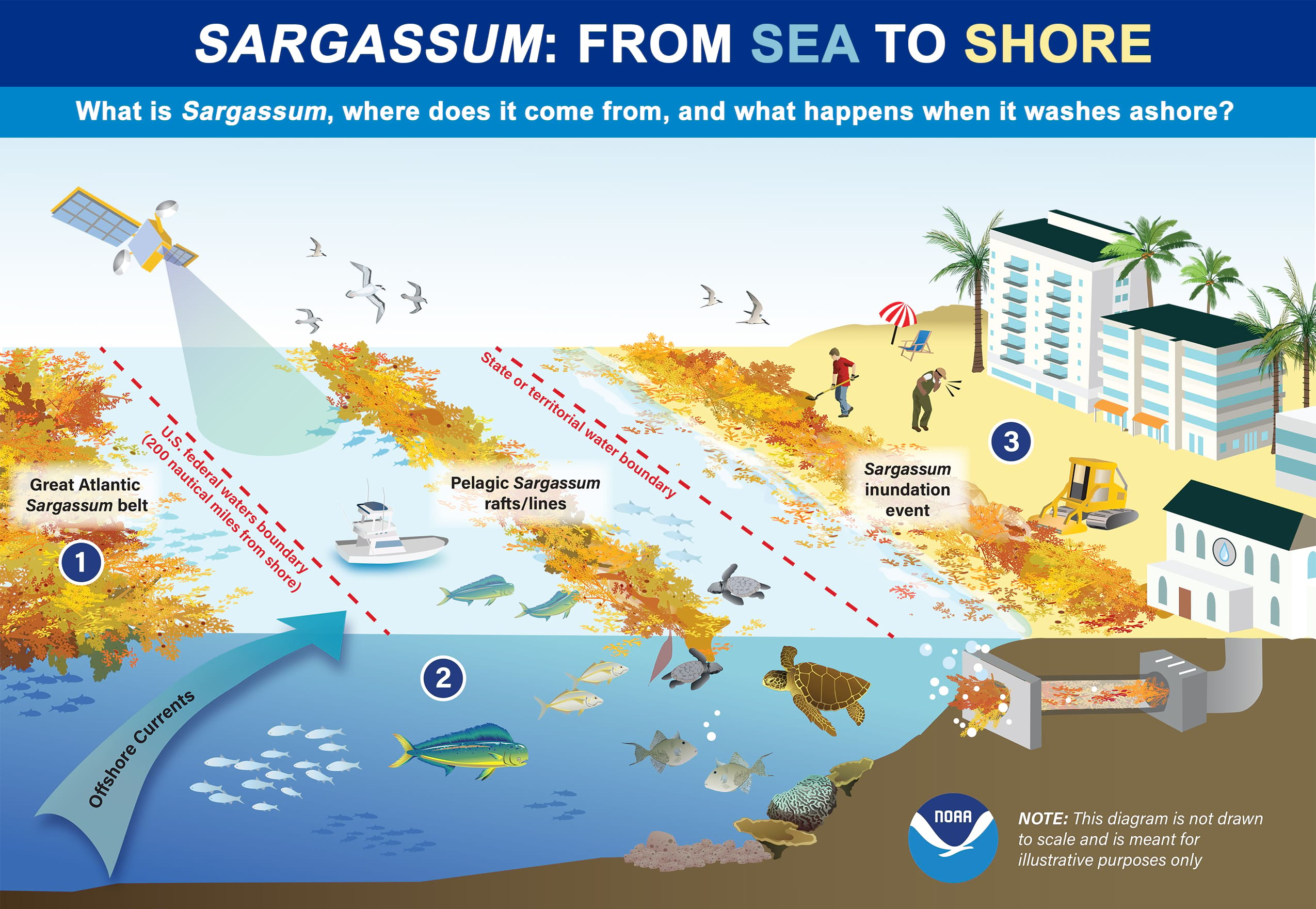The National Oceanic and Atmospheric Administration (NOAA) has released “Nearshore Sargassum Management: Policy Analysis and Agency Gaps Assessment,” a detailed analysis assessing critical policy and management gaps related to Sargassum in U.S. coastal waters. Sargassum is a brown, floating algae that provides food, protection, and breeding grounds for hundreds of ocean animals and is ecologically beneficial in relatively small quantities. The assessment comes in response to escalating Sargassum inundation events (SIEs) during which large accumulations of the algae wash up on beaches. SIEs have increasingly affected the South Atlantic, Caribbean, and Gulf of Mexico regions since 2011.

The assessment summarizes the ecological role of Sargassum and the regulatory complexities that have emerged as SIEs have increased in frequency. Recent incidents, such as the contamination of the U.S. Virgin Islands’ water supply in August 2022 due to a massive influx of Sargassum, underscored the urgent need for a coordinated response. This event prompted FEMA to declare a federal emergency and led NOAA to deploy scientific support staff to assist affected communities.
The rise in Sargassum, possibly due to increased nutrient pollution and changes in climate, has created a range of complications for coastal communities, wildlife managers, and commercial fisheries. NOAA aims to provide a clearer understanding of the roles various agencies play in Sargassum management and to identify where gaps exist in current policies.
The assessment is structured in four parts. Part I offers an overview of Sargassum ecology, its distribution, and the impacts onshore. Part II reviews the different legal designations of Sargassum in the U.S. Part III outlines existing efforts within NOAA to manage Sargassum, while Part IV identifies critical gaps in the existing legal and agency framework. Notably, the assessment reveals uncertainties regarding when Sargassum transitions from being a beneficial habitat to a hazardous presence, suggesting a need for more nuanced approaches to management and mitigation.
The assessment does not advocate for specific management strategies, rather it serves as a consolidated reference to expedite policy development, ensuring that the responses to Sargassum are informed by sound science and comprehensive understanding of existing federal regulations.
The release of this assessment signals NOAA’s commitment to improving interagency coordination and addressing the pressing challenges posed by Sargassum. As coastal communities continue to grapple with the impacts of harmful algal blooms, effective management of Sargassum will be critical in safeguarding both environmental and public health.
Visit NOAA’s Southeast and Caribbean Regional Team (SECART) website for more information and to access the full assessment.
This assessment was developed by NOAA SECART in collaboration with the University of Miami Cooperative Institute of Marine and Atmospheric Research, NOAA National Marine Fisheries Service, NOAA National Ocean Service, and the Gulf of Mexico Regional Collaboration Team.
Suggested Citation: Vital, V., Brown, M., Galloway, J., Egan, K., and Martinez, F. (2024) Nearshore Sargassum Management: Policy Analysis and Agency Gaps Assessment. U.S. Dept of Commerce. https://doi.org/10.25923/jr7f-3n87
